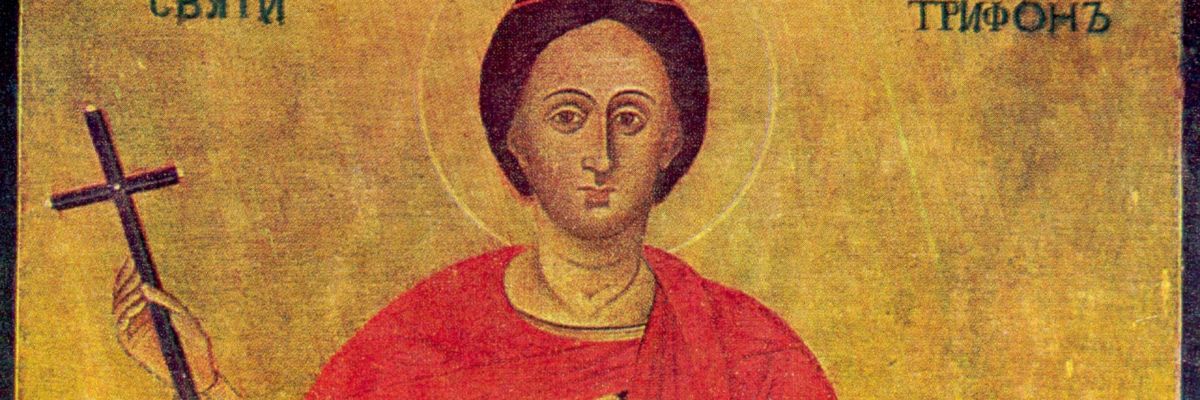

Tryphon, Respicius, and Nympha, martyrs whose feast is observed in the Latin Church on November 10. Tryphon is said to have been born at Kampsade in Phrygia and as a boy took care of geese. During the Decian persecution he was taken to Nicaea about the year 250 and put to death in a horrible manner after he had converted the heathen prefect Licius. Fabulous stories are interwoven with his legend. He is greatly venerated in the Greek Church which observes his feast on February 1. In this Church he is also the patron saint of gardeners. Many churches were dedicated to him, and the Eastern Emperor, Leo VI, the Philosopher (d. 912), delivered a eulogy upon Tryphon. About the year 1005 the monk Theodoric of Fleury wrote an account of him based upon earlier written legends; in Theodoric’s story Respicius appears as Tryphon’s companion. The relics of both were preserved together with those of a holy virgin named Nympha, at the Hospital of the Holy Ghost in Sassia. Nympha was a virgin from Palermo who was put to death for the Faith at the beginning of the fourth century. According to other versions of the legend, when the Goths invaded Sicily she fled from Palermo to the Italian mainland and died in the sixth century at Savona. The feast of her translation is observed at Palermo on August 19. Some believe that there were two saints of this name. The church of the Hospital of the Holy Ghost at Rome was a cardinal’s title which, together with the relics of these saints, was transferred in 1566 by Pope Pius V to the Church of St. Augustine. A Greek text of the life of St. Tryphon was discovered by Father Franchi de’ Cavallieri, “Hagio-graphica” (Rome, 1908), in the series “Studi e Texti”, XIX. The Latin Acts are to be found in Ruinart, “Acta Martyrum”.
GABRIEL MEIER


